by Camila Eiras Marchon
My research departs from the revolutionary Cinema Novo movement in Brazil during the military dictatorship from 1964 until 1985, when there was an atmosphere of industrialization and modernization in the country, which demanded a variety of cultural products, including films. Like Third Cinema, the main characteristic of Cinema Novo is criticizing social injustice and disparity while seeking transformation. This research investigates why the transformation is challenging since the less privileged population lacks access to cultural venues and products.
Cinema Novo
Inspired by the European film movements Nouvelle Vague and Italian Neorealism, Cinema Novo challenged political situations to reveal inequalities and social issues in Brazilian society. This movement was developed by filmmakers with the same ideological and aesthetic influence, although they were unaware of Cinema Novo as a style. Still, their films were characterized by a low production cost, using handheld cameras, natural light, sound, and non-actors in their films, in opposition to the ideal of the entertainment industry, especially massive Hollywood productions without any political awareness.
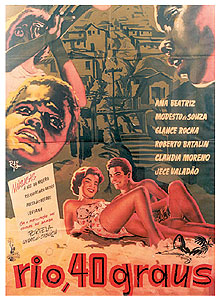
It’s hard to precise the exact beginning and end of the Cinema Novo era. Academics used some common sense to establish that the first phase of this movement started in 1955, with the film Rio 100 Degrees F (Rio 40 Graus), by Nelson Pereira dos Santos. The Communist Party partially founded the film, and the crew worked for little or no payment. Rio 40 Degrees F. is a semi-documentary about the people of Rio de Janeiro, showing a day in the life of five boys from a favela. On a sweltering Sunday, they sell peanuts at Copacabana, Sugar Loaf Mountain, and a soccer game. The boys meet other characters along the way, which supports the narrative by showing the reality of Rio de Janeiro when it was still the capital of Brazil. The film explores class inequality, poverty, and racism. Later on, it was censored by the military, who considered the social inequality portrayed in the city a big lie.
Nelson Pereira dos Santos contributed significantly to the movement. He did other relevant films, such as Barren Lives (Vidas Secas), in 1963, which portrays a poor family in the Northeast of Brazil fighting unequal land distribution and wealth.
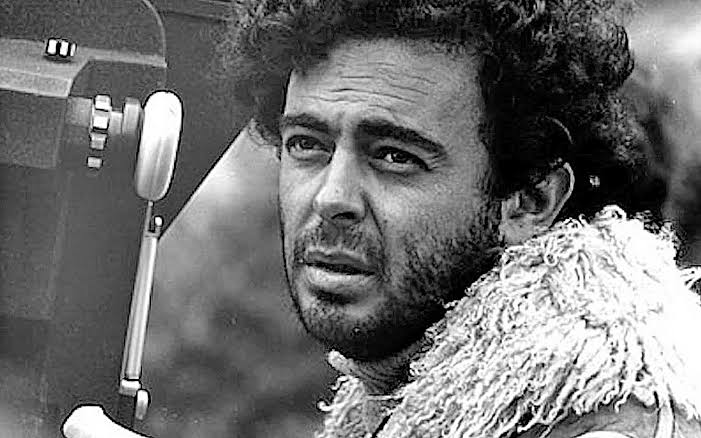 Glauber Rocha, one of the most influential filmmakers in Cinema Novo, summarized in a sentence the visual language, technic, and concepts in these films: a camera in hand, an idea in the head (uma camera na mão, uma ideia na cabeça). This refers to films that reflect the directors that will use every resource available to make their films, even if the resource is just an idea and there’s no or little money to execute it. He uses Third Cinema techniques to bring awareness of Brazil’s social and political issues through cinema. Both Cinema Novo and Third Cinema shared an optimistic desire for transformation. Brazil has a known trajectory of commercial and industrial film traditions, and the Cinema Novo movement emerged as an avant-garde modernization. All the filmmakers were fighting against the hegemonic tradition and, to be more specific, fighting American imperialism.
Glauber Rocha, one of the most influential filmmakers in Cinema Novo, summarized in a sentence the visual language, technic, and concepts in these films: a camera in hand, an idea in the head (uma camera na mão, uma ideia na cabeça). This refers to films that reflect the directors that will use every resource available to make their films, even if the resource is just an idea and there’s no or little money to execute it. He uses Third Cinema techniques to bring awareness of Brazil’s social and political issues through cinema. Both Cinema Novo and Third Cinema shared an optimistic desire for transformation. Brazil has a known trajectory of commercial and industrial film traditions, and the Cinema Novo movement emerged as an avant-garde modernization. All the filmmakers were fighting against the hegemonic tradition and, to be more specific, fighting American imperialism.
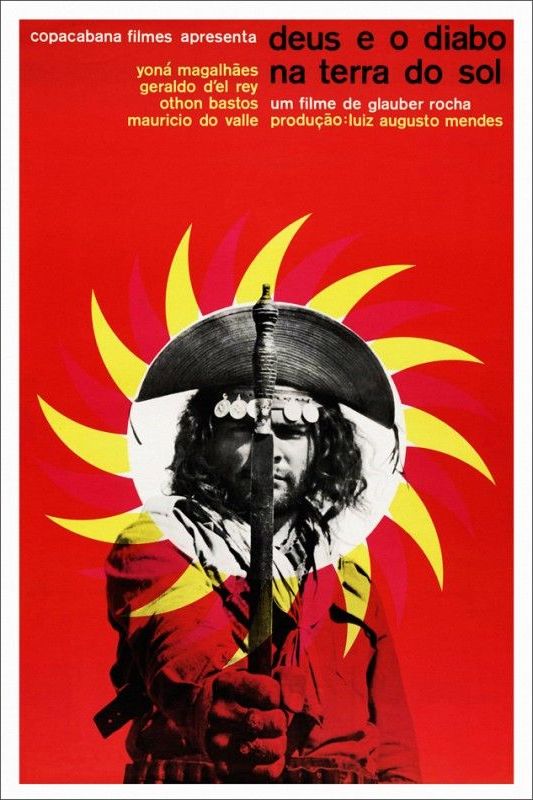 Rocha’s film Black God, White Devil (Deus e o Diabo na Terra do Sol), 1964, is still considered a gem of national cinema. This is one of the most prominent Brazilian films and achieved much international recognition in worldwide film festivals. It blends history, myth, religion, and politics in a narrative about a poor family from the Northeast fighting against the estate and the church. The couple Manuel and Rosa live in a miserable place called Sertão. When the husband committed a crime, they had to run away to hide, but they wandered between prophets and violent cangaceiros while looking for a better future that their country couldn’t provide them with.
Rocha’s film Black God, White Devil (Deus e o Diabo na Terra do Sol), 1964, is still considered a gem of national cinema. This is one of the most prominent Brazilian films and achieved much international recognition in worldwide film festivals. It blends history, myth, religion, and politics in a narrative about a poor family from the Northeast fighting against the estate and the church. The couple Manuel and Rosa live in a miserable place called Sertão. When the husband committed a crime, they had to run away to hide, but they wandered between prophets and violent cangaceiros while looking for a better future that their country couldn’t provide them with.
Both Black God, White Devil, and Barren Lives explore the same context: problems of rural Brazil, unequal distribution of wealth and land, and power structures that don’t protect the rights of the people. Political circumstances profoundly influenced Cinema Novo filmmakers. Their films reflected the idealism surrounding intellectuals of that era, hoping for an egalitarian society. They believed that showing problems were the first step to finding solutions.
CINEMA NOVO AND THE DICTATORSHIP
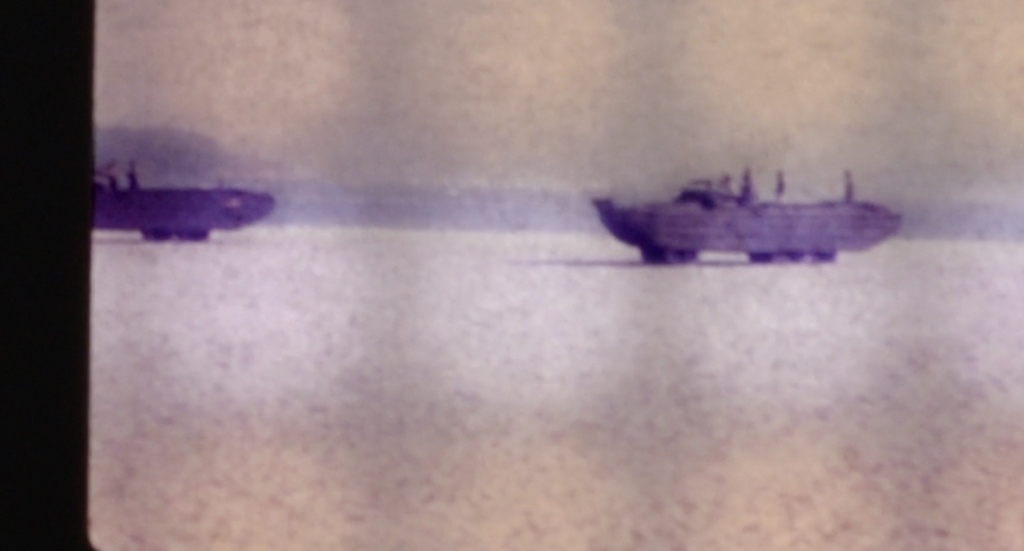
Although the Cinema Novo movement started in the ’50s, it was after 1964 that it gained more power and political context. This year, there was a military coup in Brazil. The militaries used force and power to overthrow the left-wing government led by president João Goulart, which was accused of being a communist. It was also happening at the same time as the Cold War. The world was polarized, without any option between communism and capitalism. Somehow the coup was a response to the growing political polarization in Brazilian society. The Cuban Revolution in 1959 was proof that a successful socialist revolution could happen in Latin America, so the conservative politicians and elites were immensely concerned with leftist policies. There was a fearful atmosphere in the country that a left-wing government would lead to a communist regime.
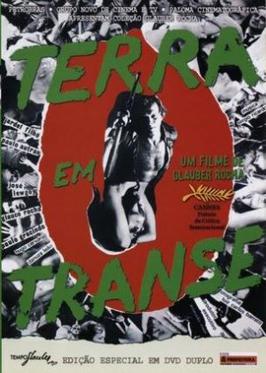 Entranced Earth (Terra em Transe), 1967, by Glauber Rocha, is one of the clearest examples of political despair. The film presents a political allegory that uses historical elements particular to Brazil and Latin America in general, showing socio-political differences in a wide range of ideological postures. The narrative reveals a clash between people and power, using military force to silence dissenting voices. Through all these facts identified in Latin America, Glauber Rocha shows a rise to power and subsequent downfall in his film.
Entranced Earth (Terra em Transe), 1967, by Glauber Rocha, is one of the clearest examples of political despair. The film presents a political allegory that uses historical elements particular to Brazil and Latin America in general, showing socio-political differences in a wide range of ideological postures. The narrative reveals a clash between people and power, using military force to silence dissenting voices. Through all these facts identified in Latin America, Glauber Rocha shows a rise to power and subsequent downfall in his film.
In 1968, the authoritarian regime passed a law ( Institutional Act No. 5) that limited freedom of speech. There was censorship of the press, restriction of political rights, and police persecution of the regime’s opponents. The government created a powerful control system that was almost impossible to resist. Everyone conspiring against the government was investigated and maybe tortured or killed. This repressive political atmosphere led many intellectuals and artists into self-exile. Glauber Rocha, for example, left Brazil in 1971. The militaries were closing theaters, cinemas, and other cultural venues, making film distribution impossible.
It was dangerous to protest against the government, but the protests came in the shape of plays, films, songs, and other artistic manifestations. As a response to the repressive regime, filmmakers developed numerous forms of artistic manipulation, such as allegories based on comedy and history, to pass the censors. It’s interesting to notice that there was a vast cultural production in the country during these years of the authoritarian regime, despite the censure coming from the government. In the musical context, a new movement called Tropicalismo emerged, associated initially with the work of musicians Gilberto Gil and Caetano Veloso. This movement achieved national prominence for bringing together different manifestations of artistic nature with the dictatorship restrictions. There was a need for greater marketability, which didn’t happen with the films. Most of Tropicalismo’s songs also had high political content. They were disguised in irony or even tones of metaphor in their lyrics so that the militaries wouldn’t take the authors. Still, a significant amount of artists were sent into exile.
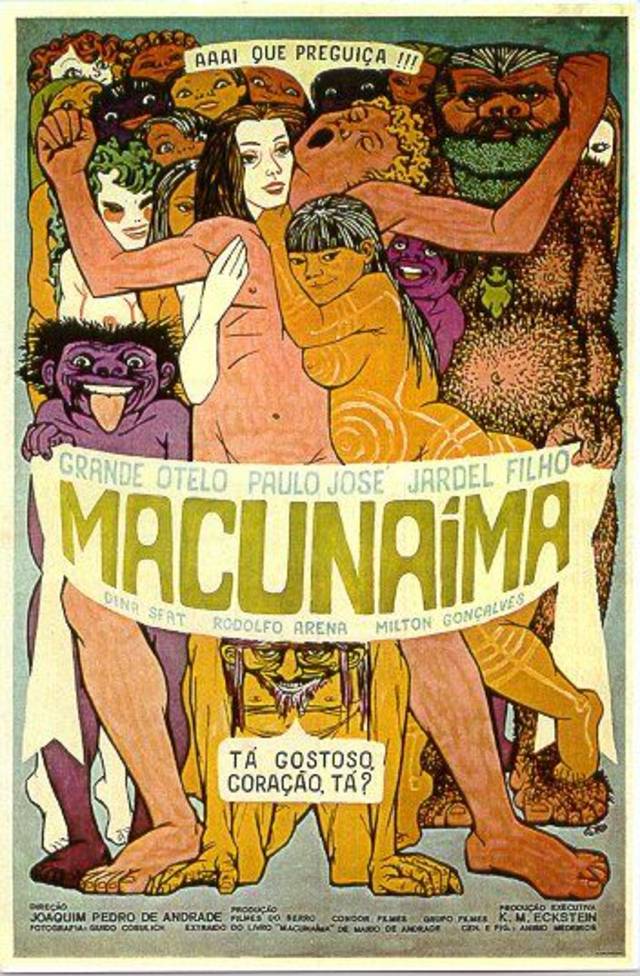 Two other films produced around these years are important to mention: Macunaíma, 1969, by Joaquim Pedro de Andrade, and How Tasty Was My Little Frenchman (Como Era Gostoso o Meu Francês), 1971, by Nelson Pereira dos Santos. Macunaíma shows the absurdity of a black man born in the jungle and becomes white on a journey to Rio de Janeiro. Along the way, he finds a giant and cannibals. This satire shows how Brazil has a complex racial history. How Tasty Was My Little Frenchman, which is considered a masterpiece, showcases the ramifications of Brazilian history through the legacy of colonialism. Both films explore cannibalism in their themes, but ultimately they were a criticism of the oppressive regime. They present in the narratives the natural and savage life to dismantle the ideological presumption of an idealized encounter between cultures. Instead, the audience is confronted with implicit capitalism violence related to territory expansion.
Two other films produced around these years are important to mention: Macunaíma, 1969, by Joaquim Pedro de Andrade, and How Tasty Was My Little Frenchman (Como Era Gostoso o Meu Francês), 1971, by Nelson Pereira dos Santos. Macunaíma shows the absurdity of a black man born in the jungle and becomes white on a journey to Rio de Janeiro. Along the way, he finds a giant and cannibals. This satire shows how Brazil has a complex racial history. How Tasty Was My Little Frenchman, which is considered a masterpiece, showcases the ramifications of Brazilian history through the legacy of colonialism. Both films explore cannibalism in their themes, but ultimately they were a criticism of the oppressive regime. They present in the narratives the natural and savage life to dismantle the ideological presumption of an idealized encounter between cultures. Instead, the audience is confronted with implicit capitalism violence related to territory expansion.
Most of the Cinema Novo films were not shown commercially. They were often criticized as too erudite for mass consumption and didn’t have mass appeal in Brazil, where social inequality and poverty rates are high. Most of the population is not privileged enough to live in an environment that gives them access to films and other artistic movements. Although Cinema Novo is notable for its critique of social inequality and response to racial and class instability, it still has an elitist soul. Their films didn’t reach the non-privileged population and were concentrated in the main capitals, Rio de Janeiro and São Paulo.
Cinema Novo had minorities as a central theme in its narrative, but it was made by intellectuals, and it was seen by educated people. There is an enormous distance in Brazil between the middle/high class and poor/less privileged people, even when they share the same cities. Inequality is a huge problem that hunts Brazil since the colonization years. It was more evident during the dictatorship because of the country’s economic growth. The concentration of income also increased among the population with a higher education level. This caused social inequality to reach levels never seen before. Still, this issue has never been repaired after the dictatorship years.
Brazil has always been admired for its cultural diversity and artistic production. However, according to the Brazilian Institute of Geography and Statistics, what is produced nationally is not accessible to a large portion of the population. Metropolitan regions concentrate 41% of all cultural consumption, which generates a discrepancy between offering artistic products and access to them.
During the dictatorship years, the philosopher and educator Paulo Freire wrote The Pedagogy of the Oppressed (1968). This book is considered a masterpiece, and it is his main work. His education method was revolutionary because he advocated for critical thinking. Back then, Freire was a professor at Recife University, and the militaries accused him of teaching subversive education. His methods were against the regime, and he went to jail for two months before going into exile in Bolivia. 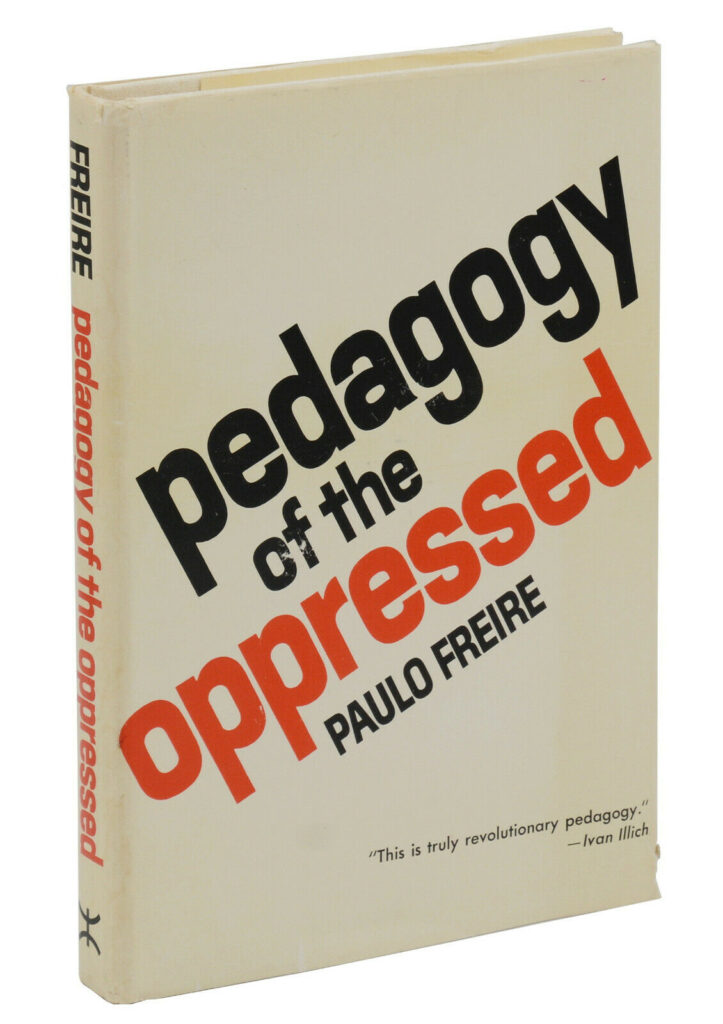
Freire was very aware of the education problem in Brazil. In his book, he talks about Bank Education versus Problem Posing Education. He sees Banking Education as an instrument of oppression and control that keeps society passive. In an educational environment, the teacher makes the student a depository. They deposit knowledge to the students in a narrowed way, without any dialogue or room for debate of ideas. The students are empty containers, and the teachers are the only agent in the education process. Education is a prescription, so the student develops mechanical thinking.
What intrigues me is that the non-privileged population in Brazil can’t escape from this education system. Children from favelas, for example, most of the time don’t have access to a quality school system. It costs money to send kids to a good school, and people who don’t have money don’t have a choice other than going to a public school, which the government provides. In many cases, they don’t even go to school.
In opposition to the Bank Education, Paulo Freire introduces the Problem Posing Education. This other type of education leads to the release of inertia. The students are more active, have more voice, and teach as they learn. Paulo Freire leads us to think about the need for change and freedom. In Problem Posing Education, there is more awareness of the self as part of the world. There should be an exchange of ideas and knowledge between educators and students instead of only repeating what the teacher says as robots. Problem-posing Education generates history that humanizes society. As humans, we are aware that we are incomplete beings, and we seek to understand the world we live in. An education process is a human act, and the students are subject to their history. Once they know their situation in society, they will never be in the oppressed condition again because their motto will be equality.
There is no interest from the government in educating this massive population and making them think critically about their situation. If the poor people get conscious of their history, they will urge for change, which is dangerous and threatening for the upper class. Unfortunately, Problem Posing Education is usually experienced in an elitist environment in Brazil.
In 2013, the Ministry of Culture surveyed that 75% of Brazilians either do not attend or have never been to a museum. Among the various reasons, it is highlighted that many interviewees claim not to feel belonging to the cultural expression offered by them. Cultural inclusion depends not only on the formation of a consumer audience but also on representation and having more diversity of artists showing their works in cultural venues such as museums and theaters.
The current Brazilian film production continues to follow Cinema Novo’s path and focuses on the country’s racial, disparity and land issues. Bacurau (2019), by Kleber Mendonça Filho and Juliano Dornelles, presents a metaphor for the fictional city in the film with the Brazilian scenario. When it is often questioned why the Brazilian people have silently accepted oppression without revolting, the film proposes a symbolic revolution of the lower class against the dominant classes. It is a historical revenge of Brazilians against the colonizer, suggesting that in order to build something, it is necessary to destroy the preexisting system. 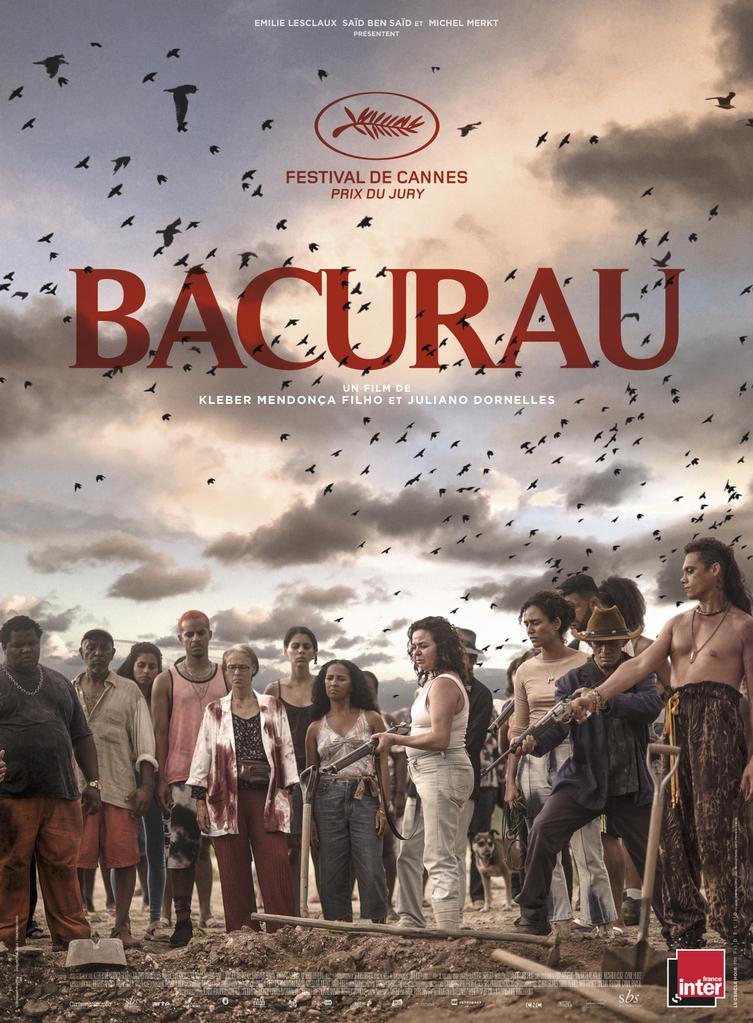
Bacurau is a brilliant film essential to understanding Brazilian issues, but it didn’t reach a mass population in its distribution. It is a film from the elite to the elite, with a lot of international recognition, including a prize at the Cannes Film Festival. I wonder if it creates some type of change in the system, and the first answer is no. But giving another thought, I believe that Bacurau and other films like The Second Mother (A Que Horas Ela Volta?), 2015, by Anna Muylaert, create political awareness regardless of social class. Perhaps the younger generation can be influenced by this new wave in films and won’t repeat the same mistakes or cruelties performed by the previous generation.
A successful case of effective change in the cinema is the film Five Times Favela (Cinco Vezes Favela), 1962. Back to the Cinema Novo years, the film shows five short stories about five people living in favelas in Rio de Janeiro. Each story had a different director (Marcos Farias, Miguel Borges, Cacá Diegues, Joaquim Pedro de Andrade, and Leon Hirszman). Still, these directors were part of the Cinema Novo movement and, consequently, part of the Brazilian intellectual bubble. In 2010, Cacá Diegues, one of the directors of this film, produced 5x Favela, Now by Ourselves (5x Favela, Agora por Nós Mesmos). This film is a type of remake of the first one, but this time directed by five young filmmakers from favelas. This is the first Brazilian feature film entirely conceived, written, and directed by young favela residents.
5x Favela, Now by Ourselves opens doors to other generations of the young black population. Internet access and social media give space to silent voices from the favelas and less privileged places in Brazil. The filmmaker Yasmin Thayná is the founder of the collaborative streaming channel “AFROFLIX,” an online film platform with at least one black person in the leading production role. She also directed KBELA, 2015, an experimental short film about whitening in society, the difficulties of being a black woman, and adapting to standards that suppress their identity.
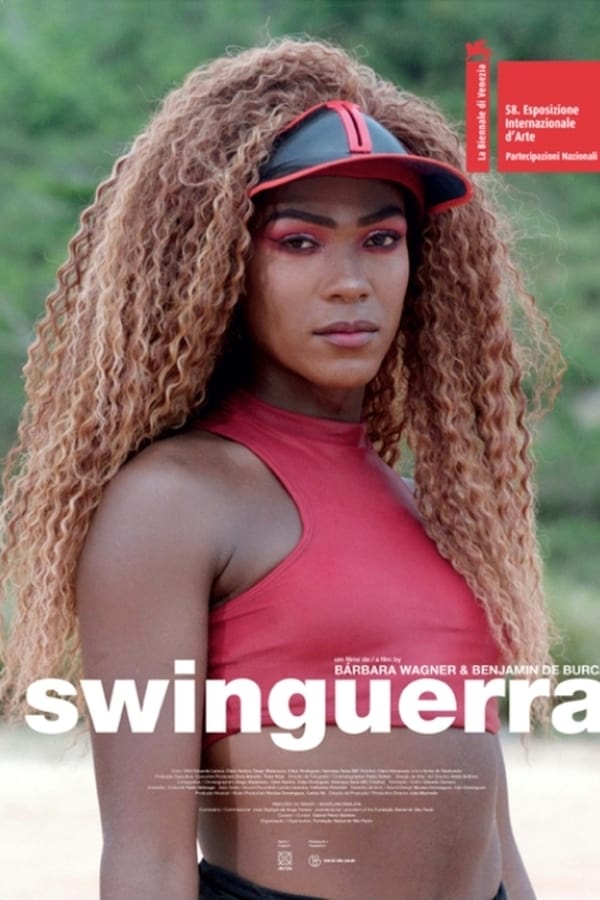 Movements such as MeToo and Black Lives Matter helped black women gain more worldwide visibility and respect. The artist and filmmaker Bárbara Wagner has been showing her work in international museums and festivals, approaching gender, race, power, and class in a complex way. Wagner and her partner Benjamin Burca often collaborate with performers to create resistance in vulnerable Brazilian communities. One of their most prominent films Swinguerra (2019), presents a perspective of contemporary Brazilian culture, showing mainly black bodies on the screen, primarily nonbinary gender.
Movements such as MeToo and Black Lives Matter helped black women gain more worldwide visibility and respect. The artist and filmmaker Bárbara Wagner has been showing her work in international museums and festivals, approaching gender, race, power, and class in a complex way. Wagner and her partner Benjamin Burca often collaborate with performers to create resistance in vulnerable Brazilian communities. One of their most prominent films Swinguerra (2019), presents a perspective of contemporary Brazilian culture, showing mainly black bodies on the screen, primarily nonbinary gender.
The film was exhibited in the Venice Bienalle when the far-right president Jair Bolsonaro was elected, a moment of political and social tension in Brazil. Although Wagner’s films were primarily shown abroad and in non-popular venues in Brazil, they still represent a type of resistance when at least half of the population screams for social change and integration. Recently Bolsonaro was defeated by the left-wing ex-president Lula, and people are more optimistic about changes in the production sector and distribution.
Let’s take Paulo Freire‘s concepts beyond education. We can see that Baking Education leads to a standard type of life. People accept reality, what the government says, and the church, the Estate, the family, the army, and all these authorities institutions as absolute truth. Banking Education is safer in a way. How can we dismantle Banking Education and help turn our environment into a space for dialogue and critical thinking? Critical thinking requires dialogue. The dialogue is used to free the oppressed from their condition of oppressed. A society without dialogue and exchange is extremely harmful, while freedom is unthinkable. Dialogue comes from our experiences and involves other people’s experiences, which leads to new visions.
